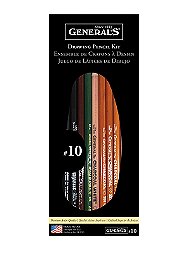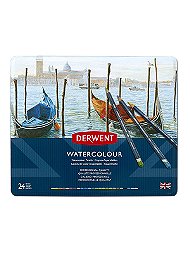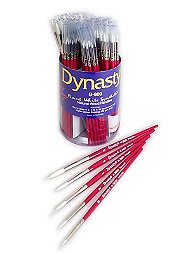Styles & Periods

Bauhaus
The Bauhaus School was founded in 1919 by Walter Gropius at Weimar, Germany, and later relocated to Dessau, Berlin, and, eventually, Chicago. The Bauhaus has had an incalculable effect on modern architecture and design, yielding hallmarks of the modern style in everything from skyscrapers to the "applied design" of teapots and toasters. The main aim of the Bauhaus was to join form and function, uniting principles of creative design with the tenets and technologies of modern science and industry. As chairman of the Working Council for Art, Gropius sought to bring all art together "under one roof,” creating architecture designed with the worker in mind. The Bauhaus was a response to the demand for buildings of specialized function; in the school, art and engineering came together. Its aim was political as well; founded in the capital of a tense, tumultuous post-WWI Germany, the Bauhaus was a self-conscious rejection of all things bourgeois. Like the Futurists, those at the Bauhaus were intensely interested in using "new" materials like glass and steel. The Bauhaus was a collectivist vision, focused on purity and utility; it shunned "bourgeois" elements like cornices, eaves, color and a surplus of space. Roofs were flat and facades sheer; rationality, not comfort, ruled the day. When the Nazis rose to power in 1937, the Bauhaus moved to Chicago (where it later morphed into the Chicago Institute of Design), and Mies van der Rohe, a successor of Gropius, also moved to Chicago. As a result, the principles of the Bauhaus quickly pollinated the world, and its influence continues to be felt in typography and industrial design as well as architecture.
- 20th Century Architecture
- 20th Century Photography
- 20th Century Sculpture
- Abstract Expressionism
- Aegean Art
- African Art
- Archaic Asian Art
- Art Nouveau
- Arte Povera
- Ashcan School
- Avant-Garde
- Barbizon School
- Baroque
- Bauhaus
- Body Art
- Buddhist Art
- Byzantine Art
- Carolingian Art
- Celtic Art/ Early Medieval Art
- Chinese Painting
- Color-Field Painting
- Computer Art
- Conceptual Art
- Constructivism
- Contemporary Art in Asia
- Cubism
- Dadaism
- De Stijl
- Die Blaue Vier
- Die Brücke
- Divisionism
- Early Christian Art
- Early Renaissance
- Earthworks
- Egyptian Art
- Environmental Art
- Etruscan Art
- Expressionism
- Fauvism
- Feminist Art
- Funk Art
- Futurism
- Gothic Art
- Graffiti Art
- Greek Art
- Happenings
- Hard-Edge Painting
- Hellenistic Art
- High Renaissance
- Impressionism
- Indian Art
- International Gothic
- Islamic Art
- Kinetic Art
- Korean Ceramics
- Mannerism
- Metaphysical Painting
- Minimalism
- Modernism
- Native American Art
- Near Eastern Art
- Neoclassicism
- Neo-Expressionism
- Neoplasticism
- Northern Renaissance
- Oceanic Art
- Optical Art
- Ottonian Art
- Outsider Art
- Performance Art
- Photo Realism
- Pop Art
- Post-Impressionism
- Postminimalism
- Post-Painterly Abstraction
- Precisionism
- Prehistoric Art
- Pre-Raphaelites
- Process Art
- Public Art
- Purism
- Realism
- Regionalism
- Rococo
- Roman Art
- Romanesque
- Romanticism
- Social Realism
- Spatialism
- Suprematism
- Surrealism
- Symbolism
- Synthetism
- Tonalism
- Video Art
|
|
|
|||
|
|
|
|||
 Download FREE coloring
Download FREE coloring
book pages to color at
home or school.
View Pages »


















